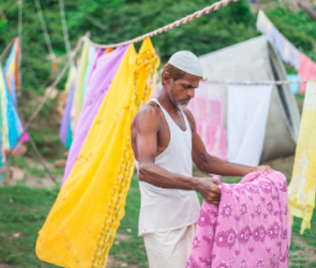
Chhangamal Ramsaran Garg Rohia was established in "1897", initially the firm was involved in the production of caps but gradually diversified into fabrication of 'angarkhas' Kurtas, sarees etc, based on customer preferences. Since then, the brand Chhangamal has become synonymous with premium and handcrafted ethnic wear that showcase the traditional Chikan embroidery in contemporary designs. Presently, chikan designed items include dining table covers, bed sheets, gents shirts, ladies suits, sarees, bottoms, dupattas and more.
Chhangamal has become the prime shopping destination for locals as well as domestic and international tourists. With focus on providing quality material, exceptional embroidery and designs that suit individual preferences, we have been able to build loyalties amongst customers that span generations.
To provide a complete fashion experience, Chhangamal has launched Rohia. Whether you want to redo your wardrobe or just add a little ethnic touch to it; we have something for everybody. The brand, Rohia, houses an elaborate collection of women's and men's clothing. The exhaustive collection for men includes Kurta, Pyjamas, Shirts, T shirts and the huge range of women wear consists of Saree, Suit, Top, Salwar & Dress Material. We also have a Kid's Collection.
To expand out customer reach, Rohia is now all set to go online. Our extensive stock collection means that customers have a lot of options to choose from while our dedicated e-commerce team ensures that the latest products are uploaded and all information is up-to-date.
Chikan name is originated from a Persian term called Chikan that means Kashidakari (embroidery).
Nur Jahan wife of Jahangir, a very talented lady started this craft of replicating the beautiful eccentric carvings done on the walls of the empire to the fabric with the help of needle and thread. She taught the art to several villagers. From then, the villagers started making Do-palli topis (caps) and Angarkhas and decorated it with intricate designs using combinations of Chikankari stitches. They followed a trend of gifting these hand-made topis and Angarkhas to Nawab Wajid Ali Shah.
Earlier it was done with white thread on white muslin but the quality and variation evolved over the years keeping up with the fashion needs and demand for variety.
The process of producing Chikan embroidered items is a long and arduous process that involves the hard work of hundreds of labourers. Chhangamal employs traditional weavers who have been doing this work for generations. This allows us to ensure that the cloth you wear is made with the best of skills and all due care has been taken to provide you only with the top quality of materials.
The production process involves the following steps:
We begin by choosing the finest, most breathable fabrics—cotton, chiffon, georgette, chanderi, mul, muslin—from across India. These light, airy textiles form the perfect base for Chikankari embroidery. Each fabric is tested for colorfastness and shrinkage before being carefully cut into garment patterns like kurtis, tops, and pants

Before embroidery begins, the garment is stitched in its final form. Details like neckline shape, sleeve length, silhouette, and flow are thoughtfully planned. Lighter fabrics are used for elegant styles like anarkalis, while sturdier ones are better suited for daily wear or kidswear. Linings and borders are added where needed for structure and modesty
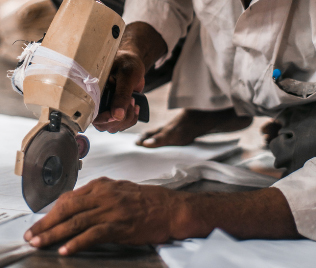
Artisans carve intricate motifs—floral, paisley, geometric—onto wooden blocks. Using age-old methods, they print these designs onto the fabric using temporary dyes. This printed outline becomes the foundation for the embroidery that follows. Often, 6–8 different blocks are used to create a single, unique design.
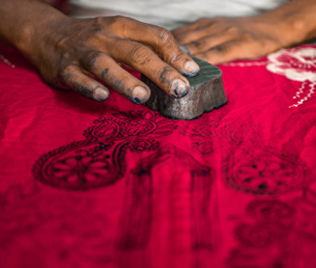
This is where the magic happens. Generations of skilled artisans use time-honored techniques like Bakhiya, Phanda, Jaali, Murri, and Tepchi to bring each pattern to life. Every stitch is done by hand, with the embroidery process sometimes taking days—or even weeks—depending on the complexity of the design.
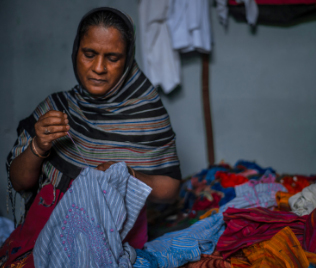
Once the embroidery is complete, the garments are gently washed to remove any block print residue, then sun-dried and ironed. Some are lightly stiffened to enhance structure, ensuring the garment looks and feels polished.
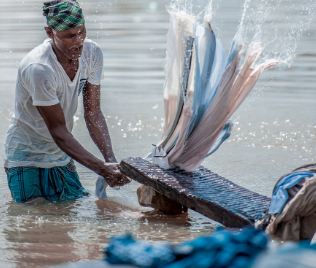
Next, colors are chosen with care—based on the season, fabric texture, and upcoming festivals. Some pieces are left in classic whites, while others are dyed into beautiful hues. Add-on embellishments like beads, mukaish, gota-patti, or zardozi are hand-applied for select pieces to elevate the final look
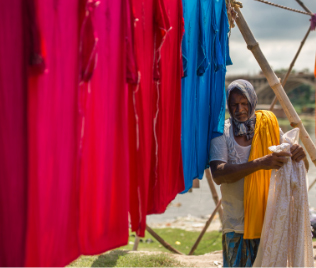
Every finished piece goes through a strict quality check—stitching, sizing, threadwork, and color are all inspected. Once approved, it’s carefully packed and stocked at our stores in Hazratganj, Bhootnath, and Alambagh—or shipped directly to your doorstep.
